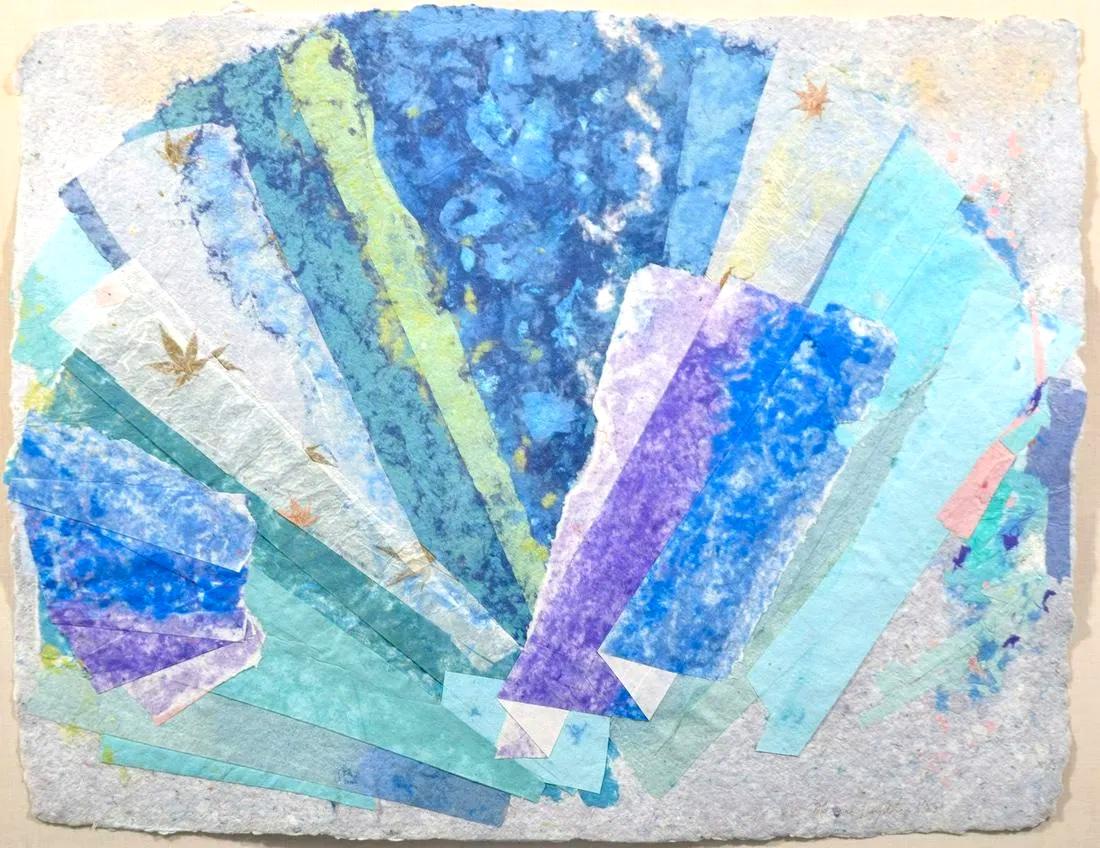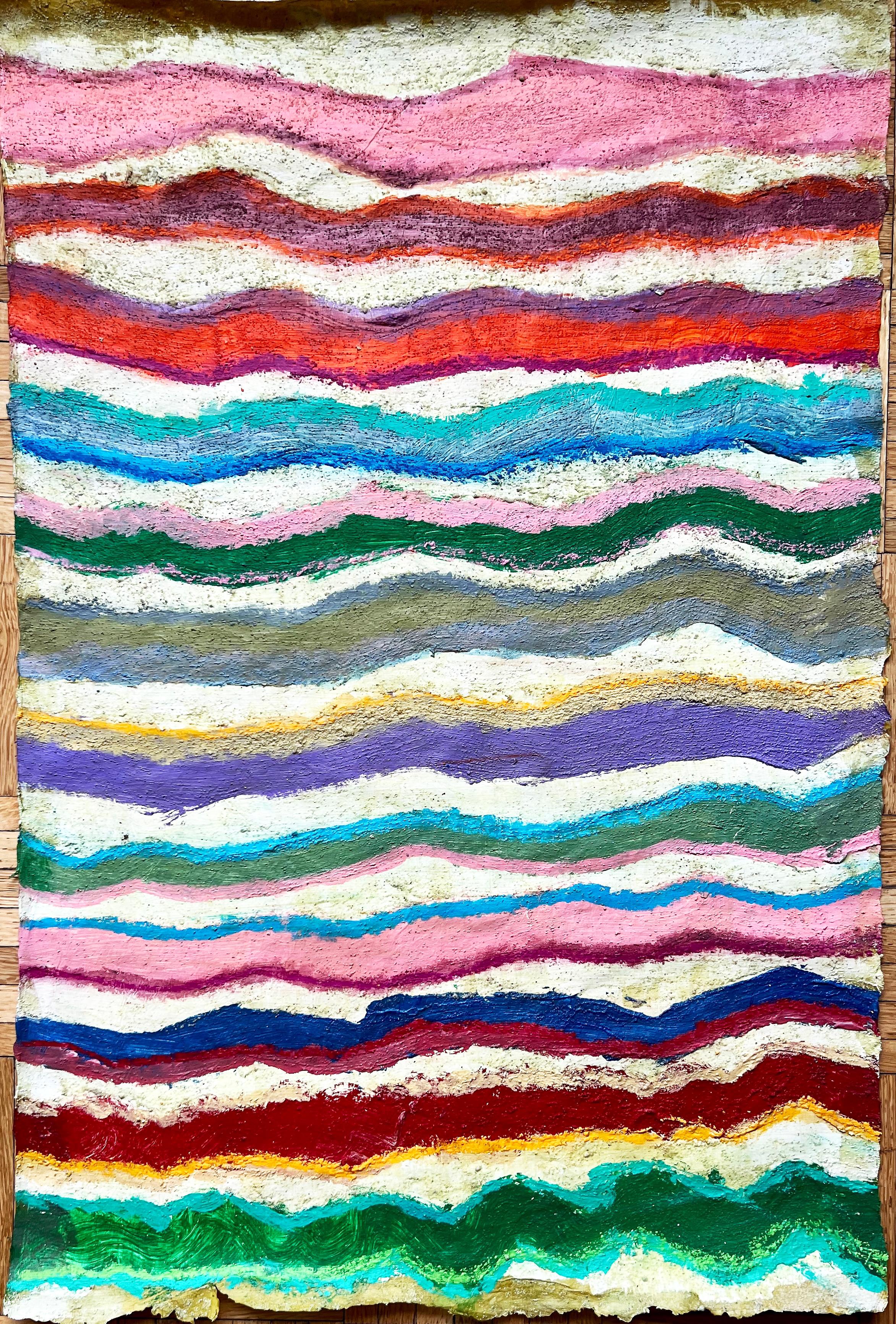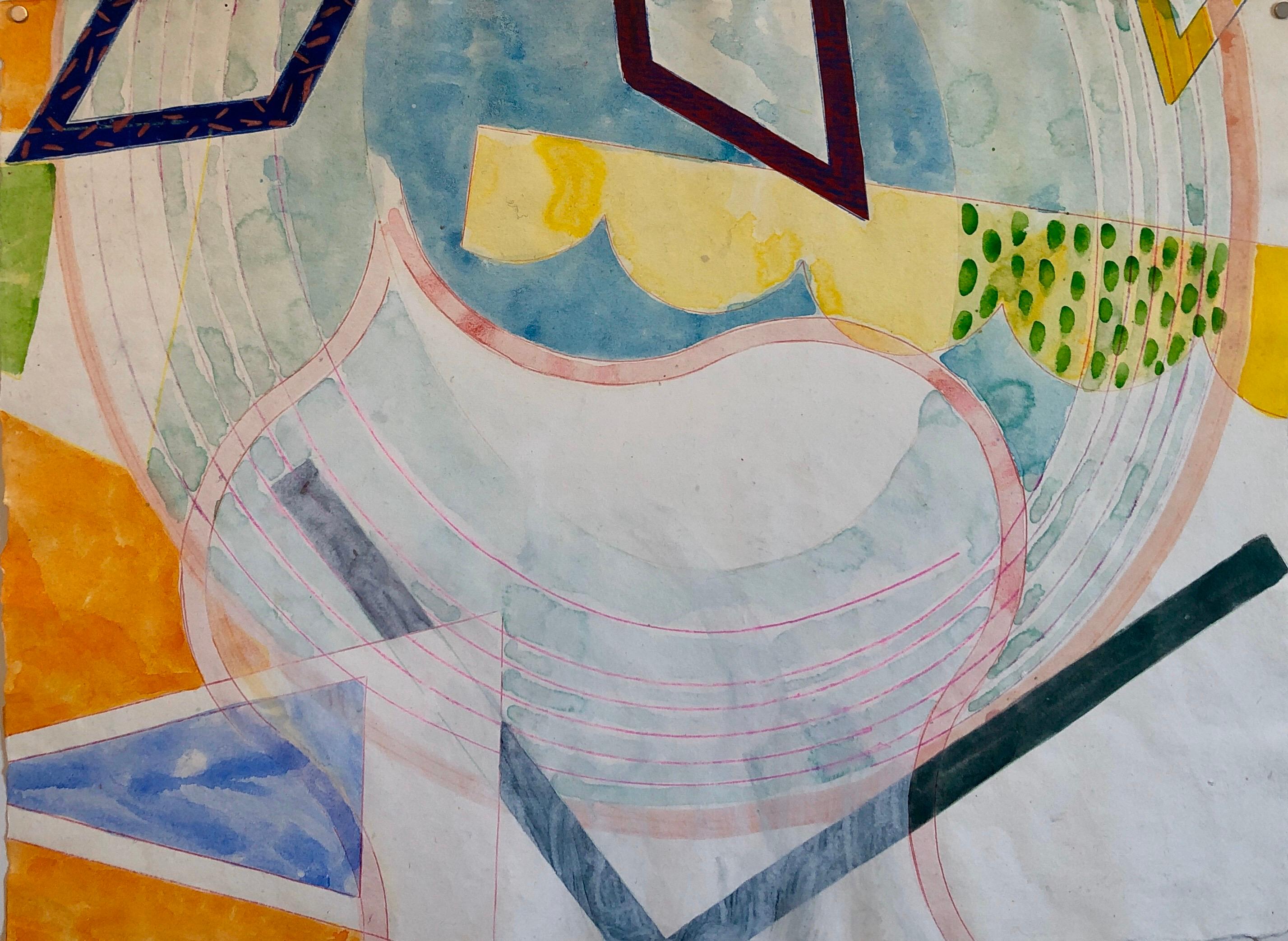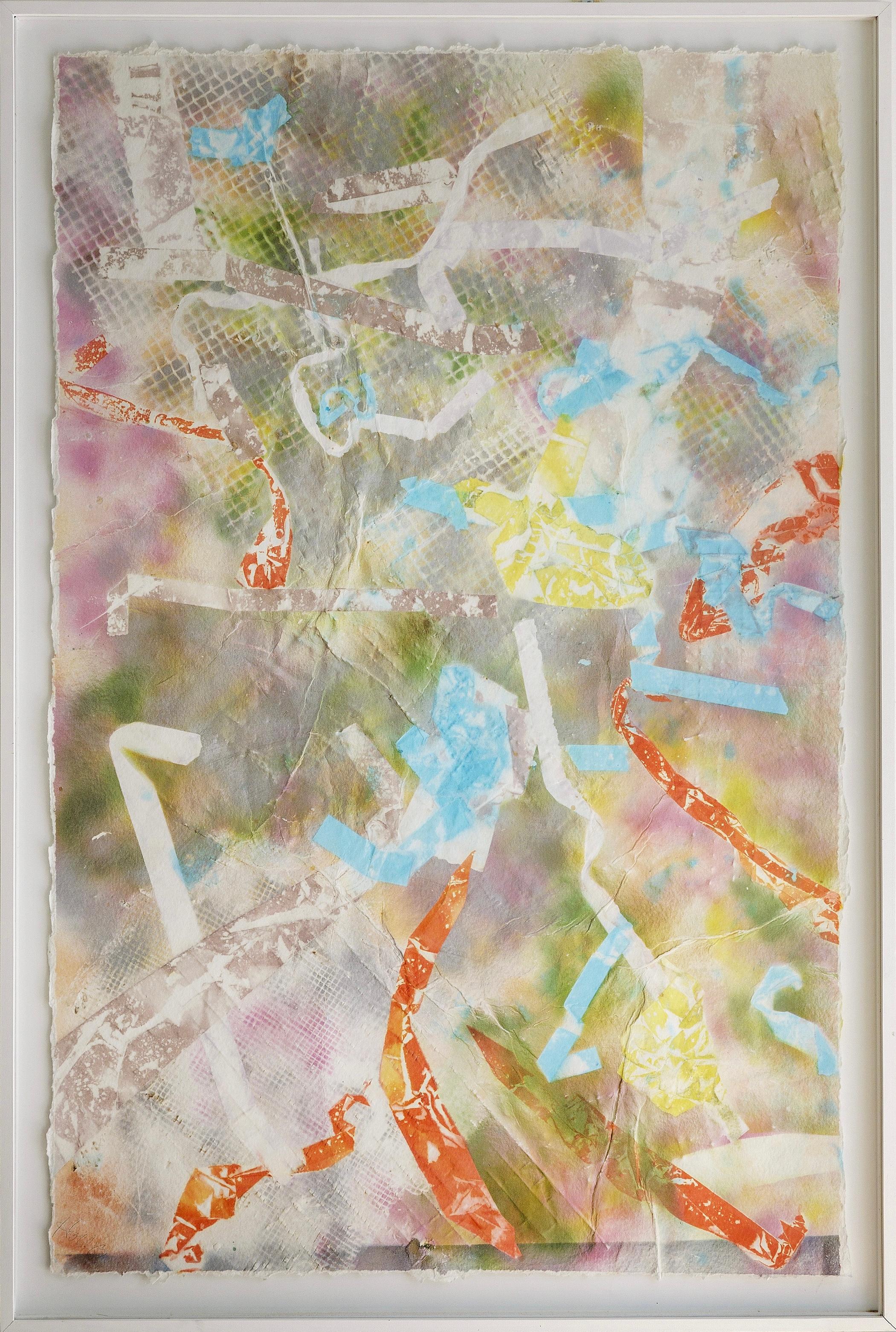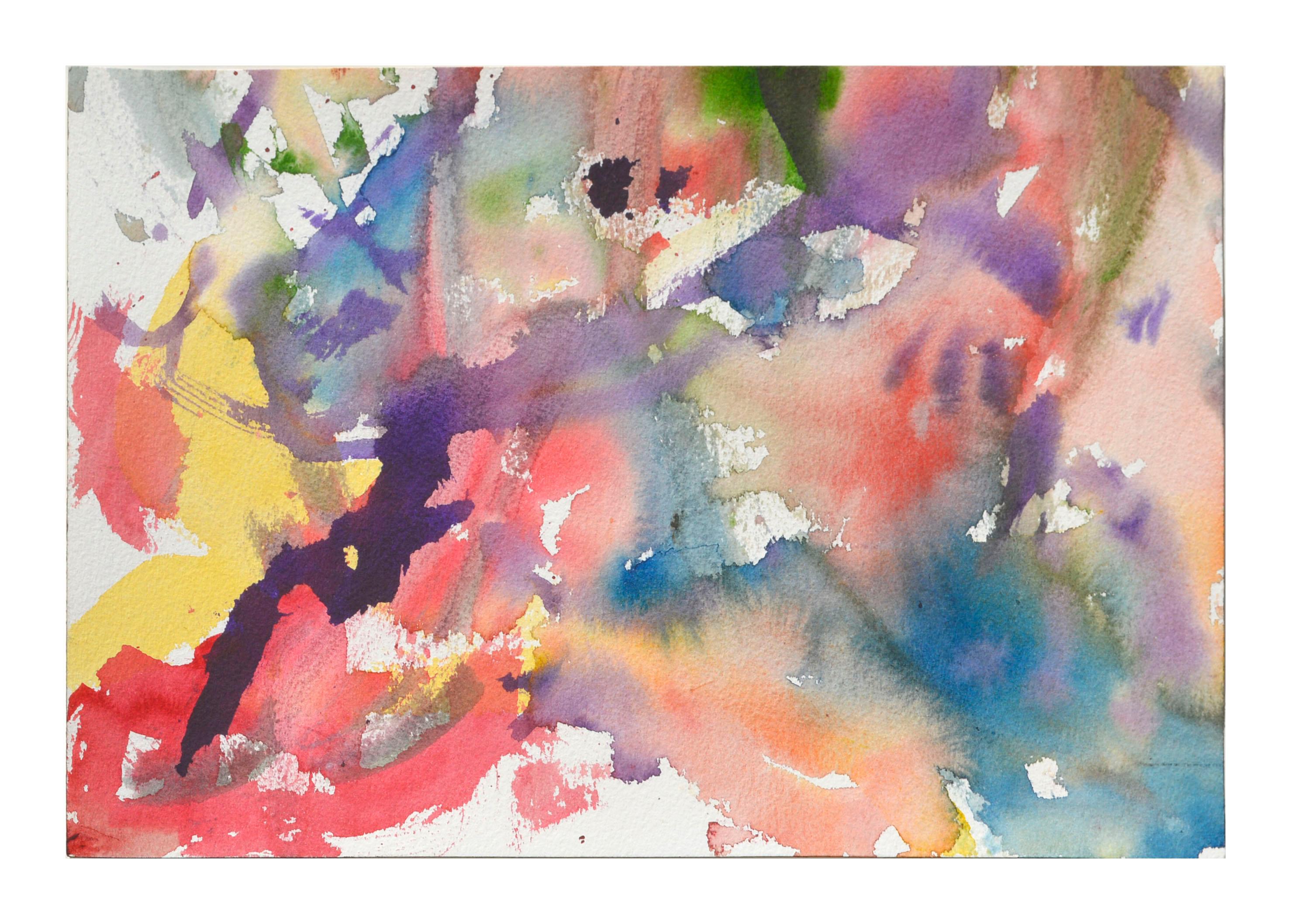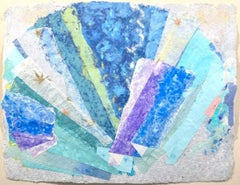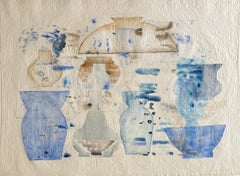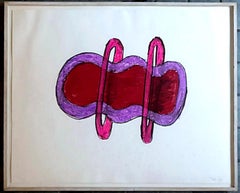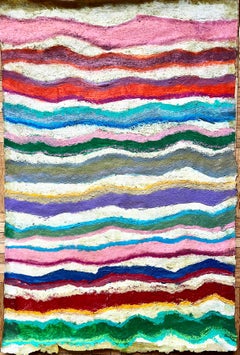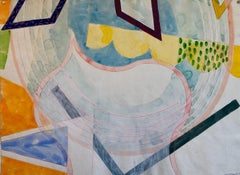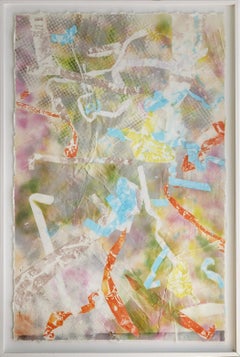Items Similar to Orchid & Red, unique signed work on handmade hand dyed paper ex Tupperware Coll.
Want more images or videos?
Request additional images or videos from the seller
1 of 9
Margie HughtoOrchid & Red, unique signed work on handmade hand dyed paper ex Tupperware Coll.1983
1983
$5,500
£4,150.70
€4,751.92
CA$7,756.82
A$8,516.02
CHF 4,442.83
MX$103,055.76
NOK 55,683.96
SEK 52,468.93
DKK 35,471.83
About the Item
Margie Hughto
Orchid & Red, 1983
Dyed Handmade paper
Hand signed and dated by the artist on the lower right front. Titled on the back.
Unique
Frame Included
Exquisite, unique work on hand made, hand dyed paper in 3-D plexiglass shadowbox.
Provenance:
Tupperware Brands Corporate Collection, Orlando, Florida (with label and inventory number)
Art Sources Inc. (with label)
Measurements:
Frame:
33 x 43.5 x 2.5 inches
Artwork:
29 x 39 inches
Margie Hughto Biography:
Hughto is an internationally recognized ceramic artist with an extensive 40-year exhibition record which includes many solo as well as group exhibitions. Her artwork is included in many private, corporate, and museum collections including IBM, Kodak, Merck, Mayo Clinic, Smithsonian, the Boston Museum of Fine Arts, and at the Renwick Gallery.
For the past 30 years, Hughto has become involved in numerous commissioned site-specific art works and several architectural public artworks. Her most notable public art project was commissioned by the Metropolitan Transit Authority of NYC for the Cortlandt Street subway station at the World Trade Tower II. Entitled, “Trade, Treasure and Travel,” the work consists of 12 large-scale ceramic tile murals at the Cortlandt Street subway station.
From 1971-1981, Hughto worked at the Everson Museum of Fine art as a part-time teacher, consultant, lecturer and Curator of ceramics. She curated numerous shows including “New Works in Clay I, II, III,” “Nine West Coast Clay Sculptors,” and “A Century of Ceramics in the United States: 1878-1978.” The Century Show was accompanied by a book published by E. P. Dutton, which is a major reference for museum curators, collectors, teachers, and artists.
Hughto joined the faculty of Syracuse University in 1971. She is currently a professor teaching ceramics in the school of Visual and Preforming Arts.
Hughto earned a bachelor’s degree from the State University of New York at Buffalo and a MFA degree in ceramics from Cranbrook Academy of Art in Bloomfield Hills, Michigan. Hughto lives in Jamesville, New York where she has a ceramics and paper-making studio.
- Creator:Margie Hughto (1944)
- Creation Year:1983
- Dimensions:Height: 33 in (83.82 cm)Width: 43.5 in (110.49 cm)Depth: 2.5 in (6.35 cm)
- Medium:
- Movement & Style:
- Period:
- Condition:Excellent; comes in the original vintage plexiglass shadowbox frame from Tupperware Brands Corporate Art Collection. Plexi has some minor scratches overall.
- Gallery Location:New York, NY
- Reference Number:1stDibs: LU1745212700682
About the Seller
5.0
Platinum Seller
Premium sellers with a 4.7+ rating and 24-hour response times
Established in 2007
1stDibs seller since 2022
451 sales on 1stDibs
Typical response time: 2 hours
- ShippingRetrieving quote...Shipping from: New York, NY
- Return Policy
Authenticity Guarantee
In the unlikely event there’s an issue with an item’s authenticity, contact us within 1 year for a full refund. DetailsMoney-Back Guarantee
If your item is not as described, is damaged in transit, or does not arrive, contact us within 7 days for a full refund. Details24-Hour Cancellation
You have a 24-hour grace period in which to reconsider your purchase, with no questions asked.Vetted Professional Sellers
Our world-class sellers must adhere to strict standards for service and quality, maintaining the integrity of our listings.Price-Match Guarantee
If you find that a seller listed the same item for a lower price elsewhere, we’ll match it.Trusted Global Delivery
Our best-in-class carrier network provides specialized shipping options worldwide, including custom delivery.More From This Seller
View AllBlue Blossom unique signed work on handmade hand dyed paper ex Tupperware Coll.
Located in New York, NY
Margie Hughto
Blue Blossom, 1983
Dyed Handmade paper
Hand signed and dated by the artist on the lower right front. Titled on the back.
Frame Included in ...
Category
1980s Abstract Abstract Drawings and Watercolors
Materials
Dye, Handmade Paper, Mixed Media, Permanent Marker
Summer Set 8, watercolor monoprint (unique) on Dieu Donne handmade paper, signed
By Arlene Shechet
Located in New York, NY
Arlene Shechet
Summer Set 8, 2005
Watercolor monoprint on dieu donné hand made paper
21 × 27 1/2 inches
Signed and dated in graphite on the front
Exquisite watercolor monoprint on di...
Category
Early 2000s Contemporary Abstract Drawings and Watercolors
Materials
Watercolor, Handmade Paper, Monoprint, Mixed Media, Graphite
A Second Hand II (unique) signed color monotype by contemporary abstract artist
By Andrea Belag
Located in New York, NY
Andrea Belag
A Second Hand II, 1990
Monotype on cotton rag paper
42 1/2 × 30 inches
Hand-signed by artist, Signed, titled and dated in pencil on the front; bears publishers name and copyright on the back, along with the unique inventory number
Unframed
Poignant 1990 monotype, in elegant pastel colors. The cotton rag paper has lightly deckled edges so it will look gorgeous when floated and framed.
American painter Andrea Belag creates lush and luminous abstractions inspired by the visual and spiritual principles of Zen, as well as artists such as Mary Heilmann, Bernard Frize...
Category
1990s Abstract Abstract Prints
Materials
Rag Paper, Pencil, Graphite, Monotype
Unique signed abstract painting on paper renowned artist, Albright Knox Gallery
By Jene Highstein
Located in New York, NY
Jene Highstein
Untitled, 1982
Pastel and Chalk on Paper
Hand signed and dated by artist on the front
32 × 40 inches
Frame included
Original hand signed pastel and chalk drawing, with...
Category
1980s Abstract Abstract Drawings and Watercolors
Materials
Paper, Chalk, Pastel, Mixed Media
So Slight a Film ex-Lehman Brothers Art Collection unique signed painting Framed
By Emily Mason
Located in New York, NY
Emily Mason
So Slight a Film (from the Lehman Brothers art collection), 1978
Oil on paper Abstract Expressionist painting
Signed and dated 'Emily Mason '78' bottom right in pencil
Fr...
Category
1970s Abstract Abstract Paintings
Materials
Oil, Graphite
Flight XXXI, unique collage, signed and inscribed to Fischbach gallery director
Located in New York, NY
Sheila Isham
Flight XXXI, 1987
acrylic, watercolor, and collage on handmade paper with deckled edges
Pencil signed, dated and titled
Signed again and warm...
Category
1980s Abstract Abstract Drawings and Watercolors
Materials
Mixed Media, Acrylic, Watercolor, Handmade Paper
You May Also Like
Bright-colored, Mixed Media Work on Washi Paper, Waves by a.muse
By a.muse
Located in New york, NY
Waves, 2022 by a.muse is a painting on Japanese washi paper. In this colorful art on paper the artist celebrates color and rhythm through lines and stripes of orange, red, aqua, blue...
Category
2010s Abstract Abstract Paintings
Materials
Canvas, Oil Pastel, Acrylic
Abstract Modernist Colorful Mixed Media Painting Handmade Paper
By Sandy Kinnee
Located in Surfside, FL
Sandy Kinnee is known for paper making, printmaking and collage.
This has the artists stamp verso.
Sandy Kinnee lives and works in Colorado Springs, CO. Kinnee was born on March, 3...
Category
1980s Abstract Expressionist Mixed Media
Materials
Paint, Ink, Handmade Paper
July, Vibrant & Abstract Acrylic on Handmade Paper
By Carolanna Parlato
Located in New York, NY
The artist describes her creative process as one that draws from imagination, reflection, and intuition, resulting in works that mediate between chance and order. She states:
“I build up my paintings with multiple layers of fluid acrylic paint, creating a conversation between light, color and space. I strive for a balance between open and cluttered spaces; orbs of vivid color bump up against intricate and tightly woven, grid-like areas of paint. This process, in play with the materials, results in graphic networks drawing on traditions of color field painters as well as contemporary works by Elizabeth Neel...
Category
2010s Abstract Abstract Paintings
Materials
Paper, Acrylic
Contemporary Multi Color Abstract Painting On Handmade Paper by Martha Holden
Located in Frederiksberg C, DK
With its extra-large dimension and joyful composition this painting by American artist Martha Holden is a rare piece. It is a contemporary abstract that ...
Category
Late 20th Century Abstract Abstract Paintings
Materials
Ink, Gouache, Handmade Paper
Pink & Purple Abstract Watercolor
By Les Anderson
Located in Soquel, CA
Abstract watercolor with soft pinks and purples by Les (Leslie Luverne) Anderson (American, 1928-2009). From the estate of Les Anderson in Monterey, California. Signed on verso and u...
Category
1980s Abstract Expressionist Abstract Drawings and Watercolors
Materials
Paper, Watercolor
$223 Sale Price
20% Off
Bloom
By Francine Tint
Located in New York, NY
Abstract work of art. Acrylic on canvas.
Category
2010s Abstract Abstract Drawings and Watercolors
Materials
Canvas, Acrylic
Price Upon Request
